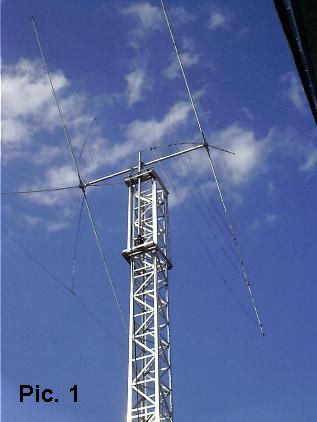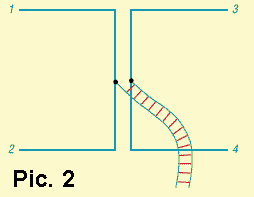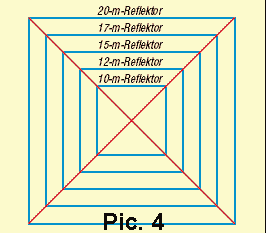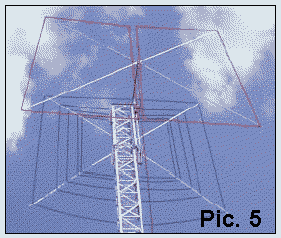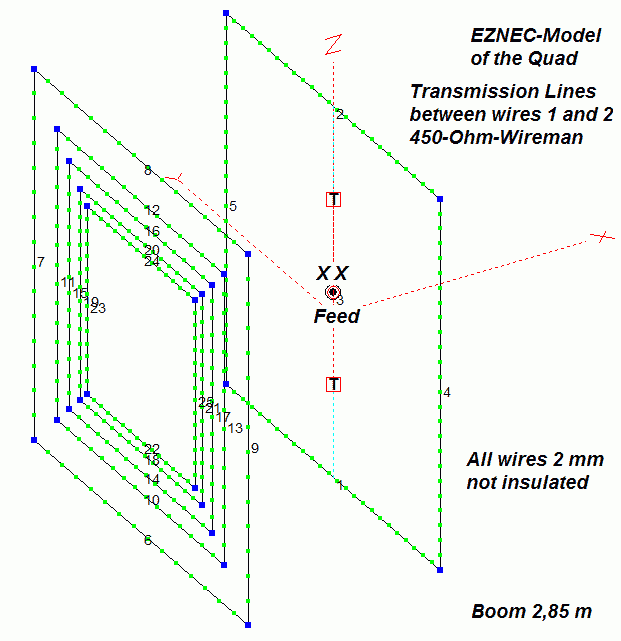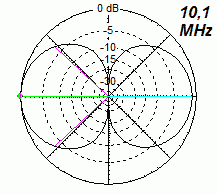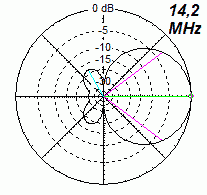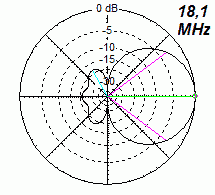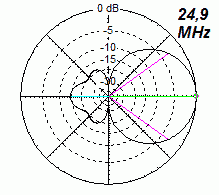| The DK7ZB-5-Band-Quad | The DK7ZB-3-Band-Quad | Oblong+Rhombus | The Extended Oblong | Delta-Loops |
|
|
2-Element-DK7ZB-Quad for 5 Bands 10-12-15-17-20 m (updated version 01/2010 see down) A description was in the German Ham-Magazine "Funkamateur" in Issue 11/2003. The picture shows the quad, built by DL1DTC The Quad uses a single, central-fed frame with a feeder-line. Therefore you must use an ATU for operating this antenna. Excellent would be a "Z-Match", a 1-KW-Tuner will be described on another page. The reflector has one loop for each band, self-resonant without stubs. The first DK7ZB-Quad was introduced in 1995 and contented a mistake and had not the best performance. In 2000 the Quad was optimized for 1-Lambda reflector loops with "EZNEC" by W7EL. |
